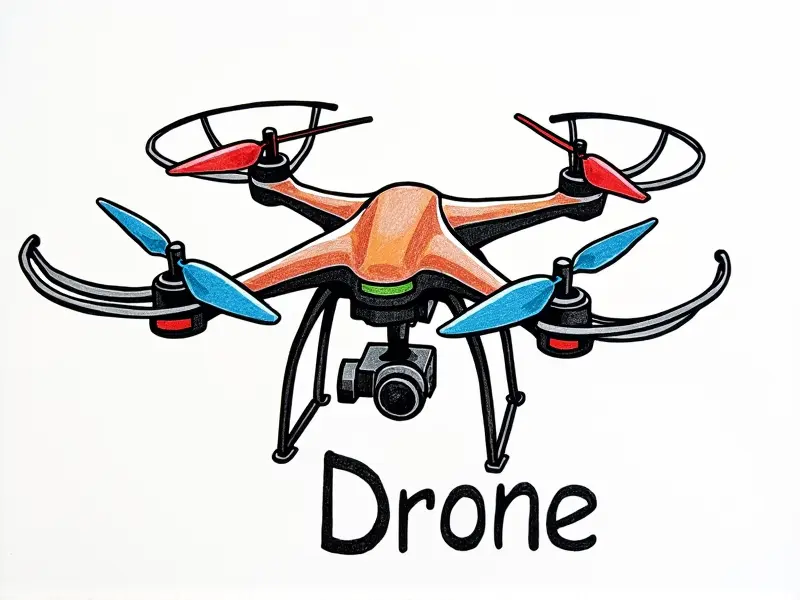Drone propeller FAQ

Drone Propeller FAQ
Top 5 Drone Propeller Myths Debunked
When it comes to drone propellers, there are several misconceptions that can lead to poor choices or maintenance practices. Here are the top five myths debunked:
- Myth 1: All drone propellers are created equal.
- Myth 2: Larger propellers always provide better lift.
- Myth 3: Carbon fiber props are too fragile for everyday use.
- Myth 4: Propeller pitch doesn't matter as much as diameter.
- Myth 5: You can interchange any propellers between drones.
This is far from true. Propellers come in various materials, sizes, and designs that cater to different performance needs.
Larger propellers can indeed offer more lift, but they also require more power from the motors. The optimal size depends on your drone's specifications and intended use.
While carbon fiber propellers can be delicate, their durability often outweighs the risks when used correctly.
The pitch of a propeller is crucial for determining its efficiency and performance at different speeds.
Propellers are specifically designed to match the motor specifications, so swapping them without proper knowledge could lead to poor performance or damage.
Understanding Drone Prop Sizes and Specs
The size and specifications of drone propellers play a critical role in determining their performance. Here’s what you need to know:
- Diameter: The diameter is the overall width of the propeller, measured from tip to tip.
- Pitch: Pitch refers to how far the propeller would move forward in one complete revolution if there were no resistance. Higher pitch means more thrust but requires higher RPM.
- Material: Common materials include plastic, nylon, and carbon fiber. Each has its advantages regarding weight, durability, and performance.
Maximize Your Drone Performance with Props
To get the most out of your drone, it’s essential to choose propellers that complement its motor capabilities:
- Select Appropriate Diameter: Smaller props are better for fast, agile flight, while larger ones provide more lift and stability.
- Balance Pitch with Speed: Higher pitch is suitable for high-speed flights, whereas lower pitch works well at slower speeds.
Tips for Maintaining Your Drone Propellers
Maintaining your propellers ensures optimal performance and longevity. Here are some tips:
- Inspect Regularly: Check for cracks, chips, or wear before each flight.
- Clean Properly: Use a soft cloth to remove dirt and debris without damaging the propeller edges.
- Store Safely: Keep propellers in protective cases when not in use.
How to Replace a Damaged Drone Propeller
If your drone propeller gets damaged, follow these steps for replacement:
- Identify the Damage: Determine if the propeller is cracked or broken beyond repair.
- Select Replacement Props: Choose props that match the original specifications exactly.
- Install New Props: Ensure they are balanced and securely attached to the motors.
The Impact of Propellers on Flight Stability
The right propeller can significantly enhance flight stability. Factors such as pitch, material, and balance all contribute to smoother flights:
- Balanced Props: Properly balanced props reduce vibrations and improve overall stability.
- Metal vs Plastic: Carbon fiber or metal props tend to offer better stability compared to plastic ones due to their rigidity.
Choosing the Right Drone Propellers: A Guide
Selecting the correct propellers involves considering several factors:
- Diameter and Pitch: Match these specifications with your drone’s motor capabilities.
- Material: Choose between plastic, nylon, or carbon fiber based on durability needs.
Common Issues with Drone Propellers Explained
Several issues can arise from improper propeller use or maintenance. Here are some common problems and their solutions:
- Vibration: Often caused by unbalanced props; ensure proper installation.
- Noise: Loud noises might indicate damaged or improperly installed propellers.
DIY Drone Propeller Modification Techniques
If you’re looking to customize your drone’s performance, consider these DIY modification techniques:
- Tuning Pitch: Adjusting the pitch can fine-tune performance for specific flight conditions.
- Balancing Props: Use a propeller balancer tool to ensure optimal balance and reduce vibrations.
What Size Propellers Fit My Drone?
The size of propellers that fit your drone depends on its motor specifications. Consult the manufacturer’s guidelines or use online calculators to determine the best fit:
- Motor Specifications: Check the KV rating and power requirements.
- Purpose of Flight: Consider whether you need agility, lift, or a balance of both.
Upgrading to Carbon Fiber Drone Props
Moving from plastic or nylon props to carbon fiber can enhance performance and durability. Here’s how to make the switch:
- Evaluate Needs: Assess whether your drone benefits from increased rigidity and reduced weight.
- Select Quality Props: Choose reputable brands known for quality construction.
Conclusion
In conclusion, understanding the nuances of drone propellers is crucial for optimizing performance and ensuring safe flights. By debunking common myths, learning about sizes and specs, maintaining your props properly, and making informed choices when upgrading or replacing them, you can significantly enhance your drone’s capabilities.

